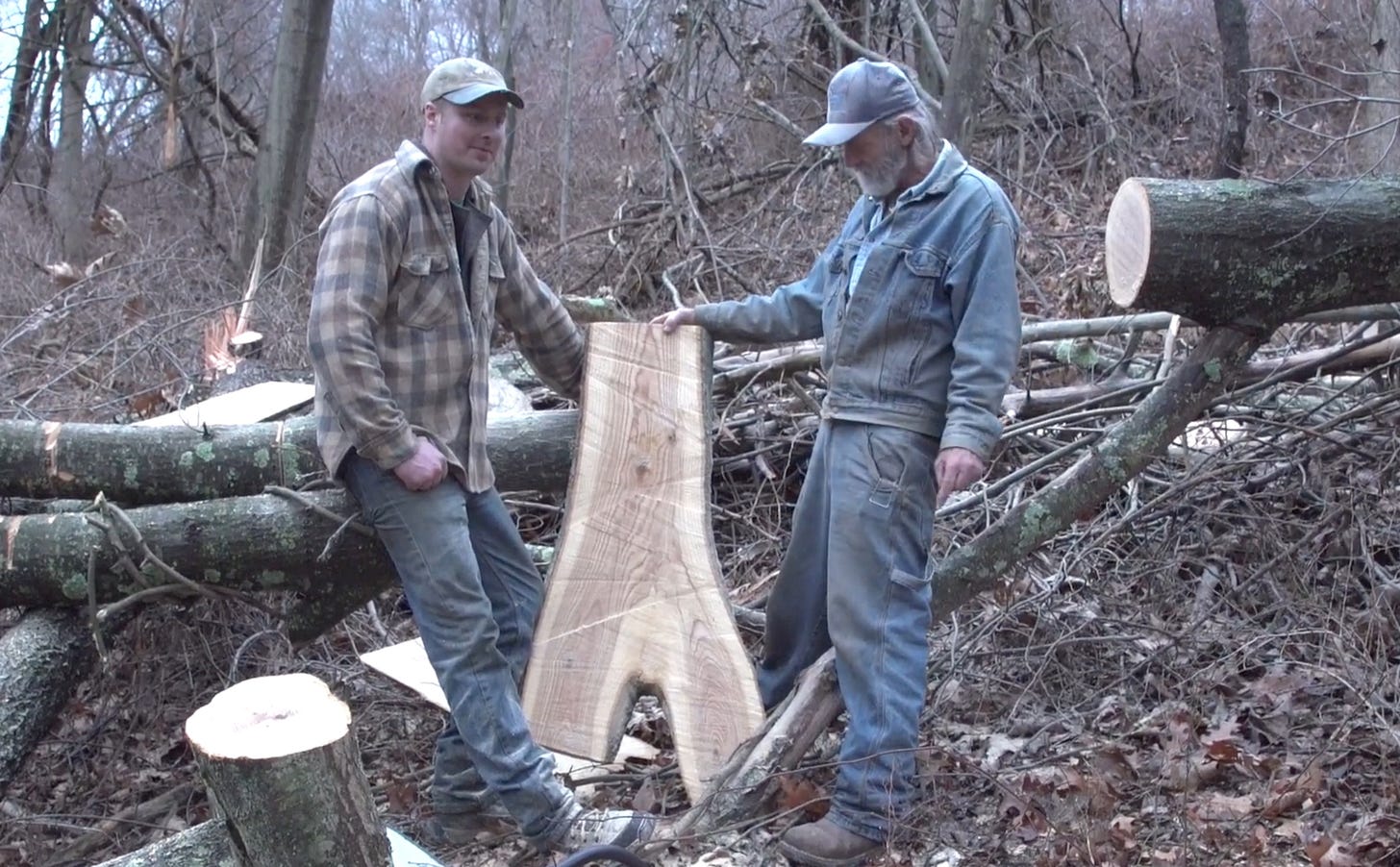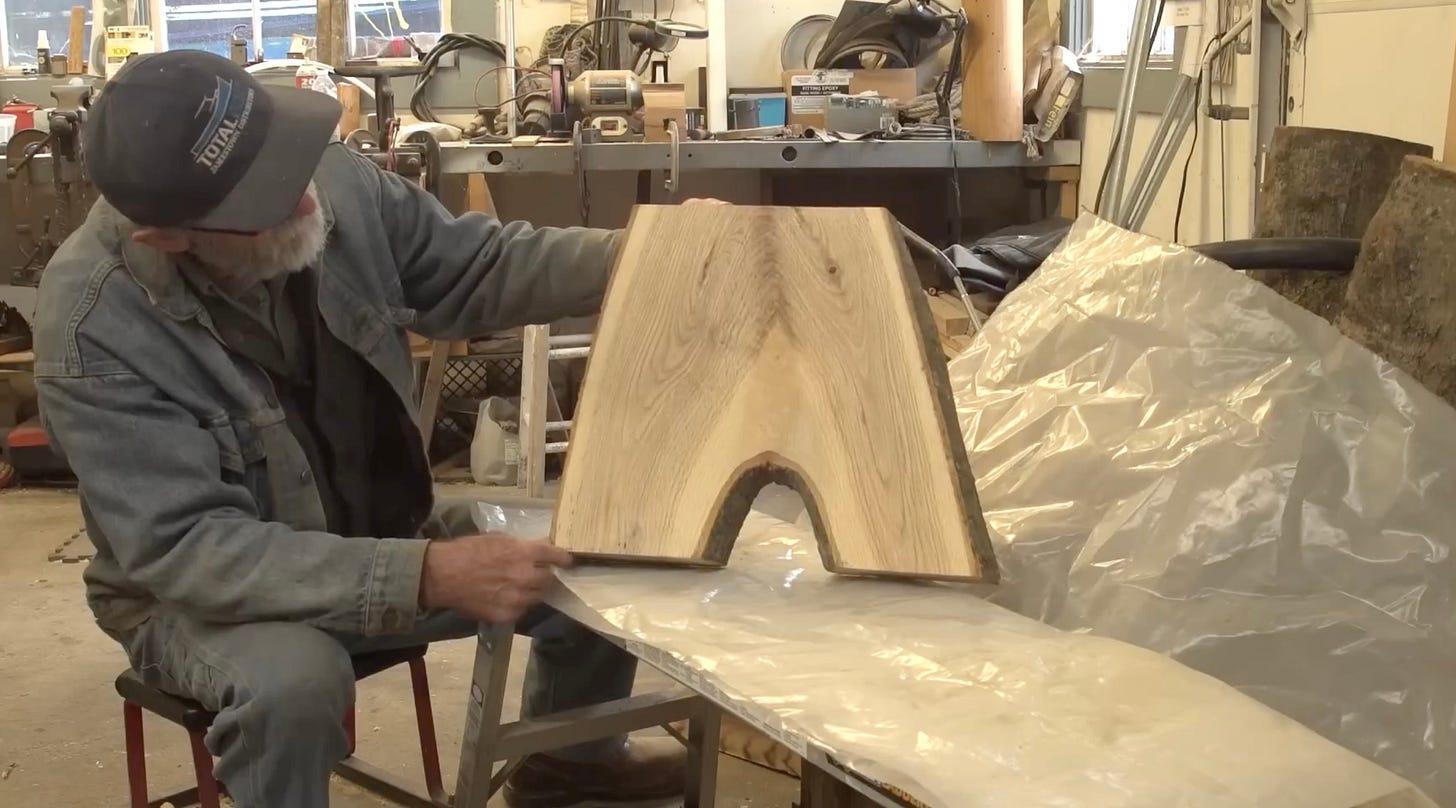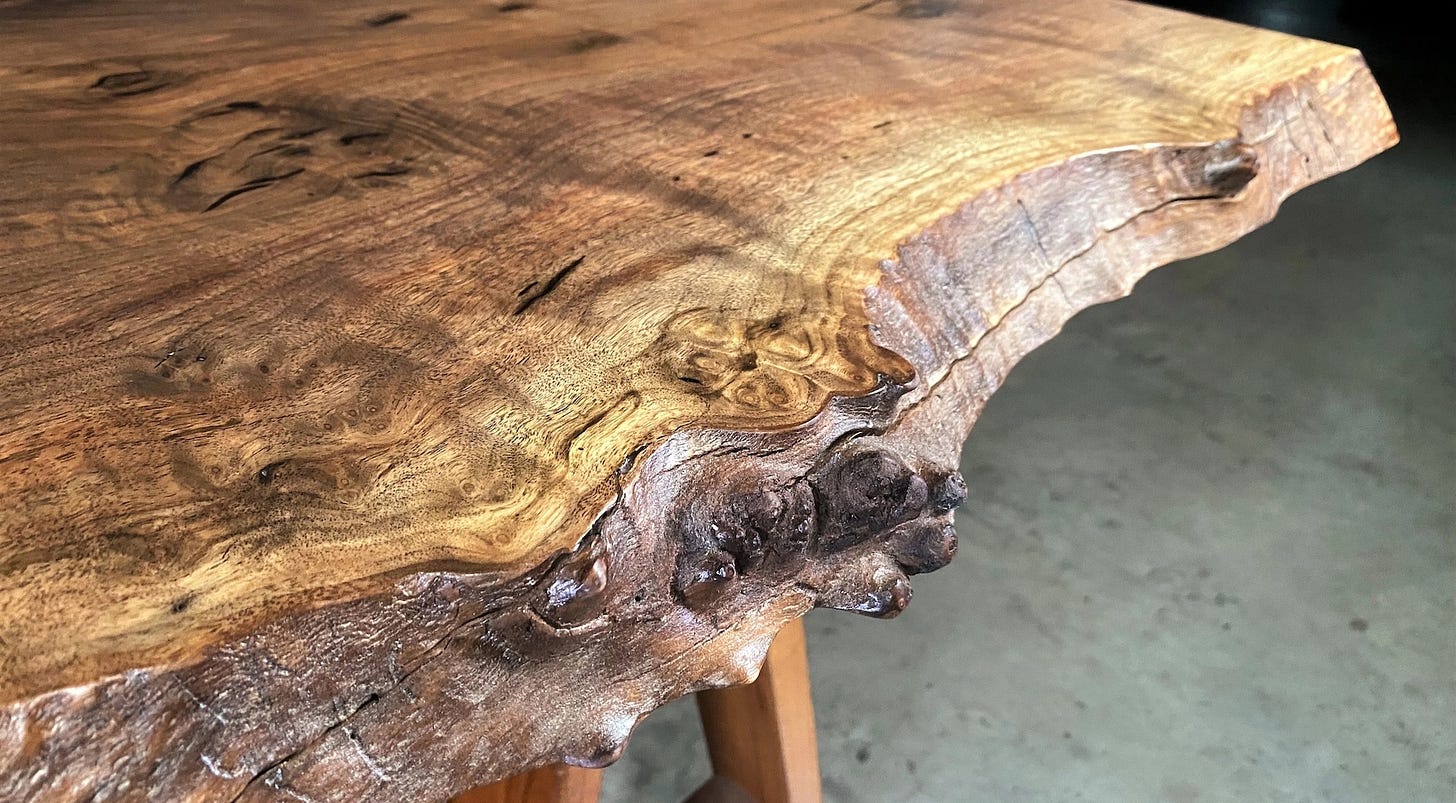Materials and mastery
How masters build expertise through deep understanding of their medium
I once saw a video of a master shipwright building a wooden skiff by hand in his primitive shop. He was building this small boat, from tree to milling, to assembly, to putting it on the harbor. Watching a master craftsman work is engrossing: the decisions made (and not made), the order of operations, where he looked to be precise and where precise measures didn't matter. It’s incredible how effortless they make it look.
If you watch how a master works, with patience and careful attention, you can learn an immense amount about what matters and what doesn't. What skills to practice, and where you can just wing it.
As he was selecting lumber for the various parts — keel, knees, gunwales, planks — he was combing through his options looking for the perfect source for the breast hook, a fork-shaped piece at bow that ties the stem to the hull:
After a search, he finds a split trunk oak from which he can mill the perfect wishbone shape. He finds his tree and extracts his breast hook, through careful milling:
The perfect piece. Grain working in his favor, no glue or laminating multiple boards required.
All sorts of woodworking, done well, benefit from skillful selection of material. The furniture builder making an arch at the top of a dresser will help themselves if they find a board with grain that flows in the direction that agrees with their design. You want your material to move with you, not fight against you.
This process perfectly illustrates a fundamental truth: mastery requires rich understanding of your craft's raw materials. The path to expertise runs through the mastery of your medium.
Crucial to this boatbuilder's mastery is his understanding of wood: of different species, grain patterns, the dynamics of the material. Wood expands and contracts with moisture, cracks as it dries, and has different densities by species or location inside the log. And its behavior gets even more complicated when you make a boat out of it and shove it in the water.
This same principle holds with all crafts. Whether the medium is paint or pencil, wood or words, colors or code, the masters of a craft develop a deep understanding of the material's properties, constraints, assets, and flaws. These properties dictate to the experienced creator how best to harness them — when and where to use that piece of lumber, that color paint, or that specific code function.
Every craft has a language of building blocks for the creator to master. Like letters into words, words to a syntax. Each medium has its own composable parts that the creator, through usage and experience, learns to manipulate to their advantage. In woodworking you manipulate trees into boards, boards into parts, and parts into furniture.
All creative endeavors work like this: a ladder of elements from the nature of the raw materials, to the subcomponents one can assemble from them, to the recurring patterns of functional, working combinations, to complete works. From the qualities of underlying materials we derive patterns of use that show utility over time — pattern languages.
Materials → patterns → assemblies → finished works
Like toddlers, beginners only have a limited vocabulary to work with. Whether we're talking a literal vocabulary for the writer or the functional patterns the programmer's memorized after writing thousands of lines of Javascript, all mediums can be formed into reusable patterns that work. The master, through that familiarity at the lowest primitive of the material itself, builds up an archive of knowledge of available building blocks, and where and when they can take advantage of them.
With knowledge of the substrate, the creator shifts from merely a user of the material to a manipulator — one that can question, bend and redefine the medium into something oriented in the direction they want to go. Every material has a texture of its own. It wants to be shaped and formed in particular directions. Particular combinations and selective choice of material allows the medium to form along with the creator's objective. Skilled craftspeople allow the available material to work with them, to flow with them. They don't spend energy jamming ill-fitting material into their process.
That door swings both ways, too. The master may modify the goal around the constraint of material. If only a specific color palette is at hand for the painter, or a specific site and setting available to the filmmaker, they'll look for how to best accommodate the constraint. Constraint makes for creativity, and the master knows how to harness it.
The master's expert knowledge affords a level of control and precision that neophytes don't have. As a mediocre woodworker, I only have so many options I can pursue given a batch of knotty, warped wood. I kind of have to avoid truly nasty boards. But the master will find a material's strength and deftly incorporate the flaws and inconsistencies. They turn the "big ugly knot" into a feature, not a bug.
Mastery instills in us a level of confidence to take risks and try the untried. The feedback loop of risk, trial, error, correction, and more risk teaches you what's possible with your medium, leading you ever closer on the asymptotic run to Mastery Nirvana.
The confidence to encounter challenges and adapt lets you innovate in real-time. Unplanned discoveries — like making a mistake and running out of a critical limited material — might lead to an interestingness otherwise unconsidered.
When I think about my own experiences in craft, whether it's writing or woodworking or cooking or programming, the hands-on knowledge of ingredients makes the process more enjoyable, too. You build up a comfort with working around problems or constraints that would trip a circuit breaker for the novice. An inexperienced cook in the kitchen follows recipes to the letter, and if they're missing an ingredient or foul up an early step, there's a tendency to fall off the track and not know how to adapt. But the chef with thousands of dishes under their belt manipulates the available ingredients into something great, regardless of a prescribed set of instructions.
The novice's interaction with materials moves in one direction. But the master is in conversation: there's a back and forth between the medium and the maker – the materials show a set of constraints, but the master shifts and adapts, exploiting the strengths and embracing the weaknesses.
Like judo, the master works with the "momentum" of their material, and lets that inform their work.









Great piece! I love the observation of higher levels of mastery leading to interesting revelations based on constraints. It reminds me of the making of Jaws, and Spielberg making the decision to “imply” the shark when the animatronics malfunctioned, which led to a more compelling outcome.